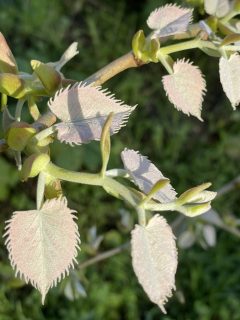Deluge and drought
How will our green and lovely Cornish gardens cope and how can we adapt to periods of drought? Our resident gardening expert, Alison Agnew, is here to help.
It seems perverse to write about drought during one of the wettest Novembers that I can remember – even in Cornwall.
In the last two years, we have had two very dry summer periods and one dry early spring. This year we had an eight-week period with almost no rain and a hosepipe ban that lasted for 13 months. Our lawns went entirely brown and one area near a tree has not completely recovered even now. The impact on flowering plants is still evident – for example some of our cannas and dahlias took so long to emerge that they only started to flower in October and November.
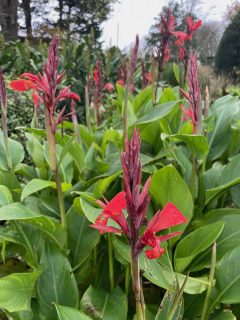
Extremes of weather are predicted to increase in intensity and frequency as climate change continues. How will our green and lovely Cornish gardens cope and how can we adapt to periods of drought?
Counter-intuitively, adapting to deluge should help us survive drought as well. Incorporating lots of organic material in the soil slows down run-off but also stores water in the soil. Mulching prevents water loss from soils as well as preventing soil and nutrient loss in a deluge. Creating sumps to drain away excess water also retains available water locally. Storing water in large tanks can prevent too much runoff down drains and it is then available for watering – even when SW Water fails us.
What else can we do?
Lawns are especially vulnerable to drought. Soft lawn grasses have relatively shallow root systems, and the leaves are not adapted to prevent water loss. We are urged to plant alternatives but most of them don’t really do the same job. Go to the Gardener’s World site advising on alternative lawn mixes and it shows a beautiful picture of mixed thymes, Sedums, Sempervivums and Erigeron daisies. Others suggest native wildflower meadows, recumbent Vinca and Campanula, dwarf mint, moss and even (our bete noir) Mind Your Own Business (Soleirolia soleirolii). All good suggestions for pretty ground covers in small spaces and back yards but not really a lawn! Just what would they look like after a game of football?
The least-worst option seems to be a clover or clover mixed with grass lawn. Clovers are deeper rooted than lawn grasses – so are more drought resistant.
They are members of the pea family so they have nitrogen-fixing nodules on their roots and thus reduce the need for fertiliser. They will flower if left un-mown so are useful for pollinators. The species that are best for lawns are recumbent so need less frequent mowing than grass, especially the micro-clover Trifolium repens var Pipolina. Clovers are also more physically robust than the other proffered alternatives.
However, they still won’t take the same footfall as grass, you will have to hand weed because selective lawn weedkillers will eliminate them and they will never give you that green velvety sward. So if your lawn is needed for playing games and sunbathing on, perhaps you should be looking at more drought-tolerant grass species as well as appropriate management. Many lawn seed companies sell a drought-resistant mix of seed, usually containing Festuca arundinacea and other more deeply rooted species than the fine lawn grasses ( Agrostis sp.). Good management will also help. Mow less frequently, at a higher level and preferably leave the cuttings on the lawn as a mulch. Stop mowing altogether in extended dry periods even if the grass starts to flower. Don’t waste water on a lawn – remember that grass is very good at recovering once the autumn rain arrives – as it surely did this year!
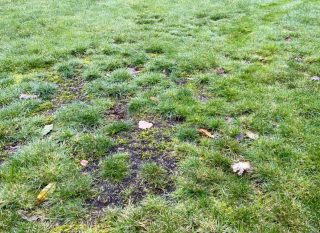
Save water for needy plants
Many of us on the Roseland (judging by the density of defibrillators) will remember the summer of 1976. Happy days – we were told to share baths and then bail them out to water the veg! ‘Grey’ water is perfectly safe to use in the garden, but our houses are poorly designed to recover it. Hopefully this will change in the future. Meantime, a little £5 siphon hand pump attached to a hose outside your bathroom window will let you siphon off your bathwater rather than bail it out with a saucepan!
However, if you get your water, save it for the most needy plants – usually fruit and vegetables that won’t perform without regular water. Technically, if not morally acceptable in a hosepipe ban, I learned the joys of occasional watering with a wheelbarrow to keep my veg going this year!
Right plant, right place
An old adage but a good one. Most gardens, even quite small ones will have micro-environments, more or less exposed, dry, sunny, shady or wet.
Dry, sunny, well-drained areas need plants adapted to reduce water loss, plants with waxy leaves, hairy leaves, reduced leaves.
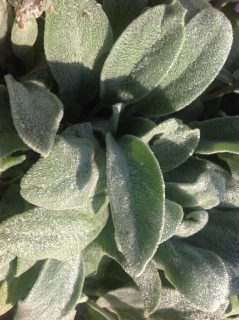
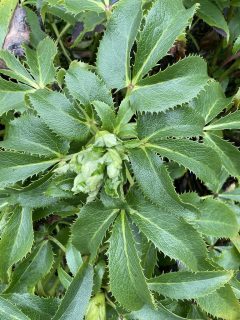
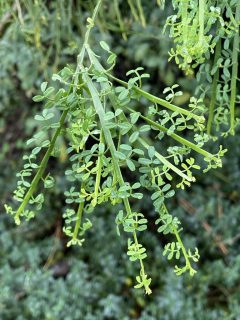
Dry sunny, well drained areas need succulent plants that hold water reserves within their leaves and stems. We are fortunate that many succulents are hardy in coastal Cornwall. Some of the Agaves, Aloes, Echeverias, Aeoniums, Sempervivums, Sedums and many of the brilliantly coloured Aizoaceae family are hardy here.

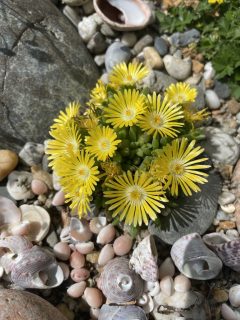
Dry, sunny, well-drained areas need plants that can access water deep below the surface – deep rooted, often tap rooted or plants that can store water, tuberous, bulbous and cormous plants.

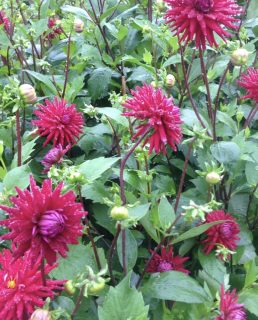
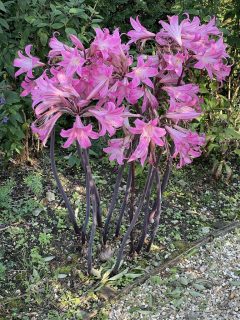

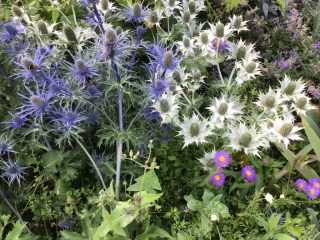
Trees and shrubs
Established trees and large shrubs are likely to have their roots extending down to the water table – even in summer. The magnificent trees of our great Cornish gardens will probably cope with even prolonged periods of drought.
Establishing new trees and shrubs will become more difficult if they have to face prolonged drought before they can get their roots down. It is best to plant in autumn when roots will still be growing in warm soil and rain is pretty much guaranteed. Plant bare root and root-balled plants if you can – they generally have more active root systems than potted plants. In our poor soil, it’s a good idea to incorporate some organic material in the planting hole but calculate on it sinking as it is used up – so plant a bit high and cover the top of the roots with more organic-rich stuff. Then write in your diary/ set your phone reminder/ programme your partner to water at least once a week! I waited years to get a young Tilia henryana, I think this the most beautiful of all lime trees especially when its young leaves are emerging. I lost it to this summer’s drought and my forgetfulness – I am in mourning.
